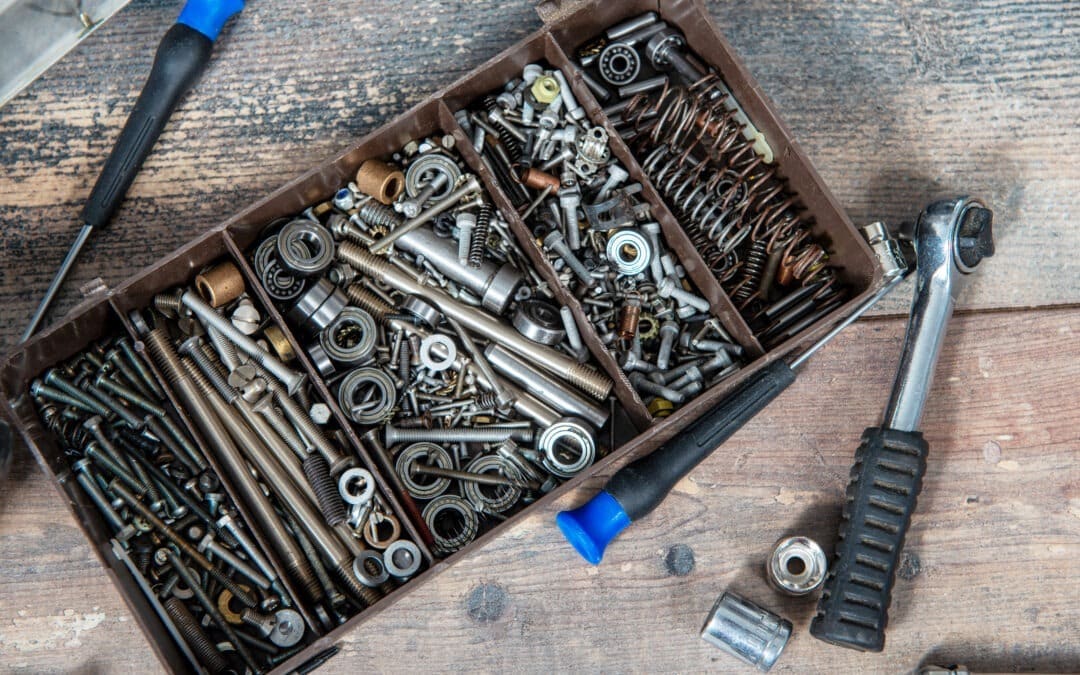In the world of architectural and design projects, it’s often the broad strokes that capture the most attention – the sweeping curves of a building, the bold colours of an interior, the visionary layout of a landscape.
In this pursuit of the monumental, however, there’s a tendency to overlook the smaller details.
It’s easy to understand why. With deadlines looming and the bigger picture demanding focus, defaulting to familiar solutions becomes second nature. Why fix what isn’t broken, right? But here’s the thing: innovation and excellence often lie in the nuances, in those minute details that most overlook.
Standoff fixing systems, for instance, may seem like just another component of the larger whole, but they play a pivotal role in bringing designs to life, in a way that’s both functional and aesthetically pleasing. But it’s important that you choose the right materials.
So what materials are used for different types of standoff fixing systems? The most common materials for standoff fixings are stainless steel, aluminium, brass, zinc, titanium, plastic or nylon, and acrylic. We recommend using stainless steel as it offers unmatched durability and a sleek look which signals a commitment to quality and sustainability.
What are the hardware materials used for standoff fixings?
These fixings elevate materials away from surfaces, creating a floating appearance that enhances visual interest and depth. Key to their function and form are the materials from which they are made, with stainless steel, aluminium, and brass being the most popular due to their distinct characteristics and advantages.
1. Stainless steel
Properties and Advantages
- Durability: Stainless steel stands out for its exceptional strength and longevity. Its resistance to corrosion, rust, and staining, especially in environments prone to moisture, makes it a reliable choice for both interior and exterior applications.
- Aesthetic appeal: With a sleek and modern finish, stainless steel can complement various design aesthetics, adding a touch of sophistication.
- Maintenance: It requires minimal upkeep, retaining its appearance and structural integrity over time without the need for frequent treatments or coatings.
Applications
Stainless steel standoff fixings are widely used in signage, architectural panels, glass facades, and railing systems. Their ability to withstand harsh conditions makes them ideal for coastal areas or buildings with high exposure to the elements.
Considerations
The cost of stainless steel can be higher compared to other materials, reflecting its durability and aesthetic qualities.
Pro tip
Architects and designers should balance budget constraints with the longevity and visual impact of their projects.
2. Aluminium
Properties and Advantages
- Lightweight: Aluminium’s most notable property is its weight – or, more accurately, the lack thereof. This makes it easier to handle and install, reducing structural load and installation costs.
- Corrosion resistance: Aluminum naturally generates a protective oxide coating. This property is particularly beneficial for outdoor or humid environments.
- Customisability: Available in various finishes and colours through anodizing, aluminium offers flexibility in design, allowing architects and designers to achieve specific aesthetic goals.
Applications
Aluminium standoff fixings are commonly used in commercial and residential interiors, for mounting decorative panels, signs, and artwork. Their lightweight nature makes them particularly suited for projects that require wall anchor fixings.
Considerations
While aluminium is more affordable than stainless steel, it may not offer the same level of strength or resistance to physical impacts. Its use should be carefully considered in high-traffic areas or where robustness is a priority.
3. Brass
Properties and Advantages
- Aesthetic warmth: Brass adds a classic, warm touch to any setting with its golden hue, making it a favourite for traditional and luxury designs.
- Malleability: Easier to shape and machine than stainless steel or aluminium, brass allows for the creation of intricate and detailed designs.
- Antimicrobial properties: Brass surfaces naturally inhibit the growth of bacteria and other microorganisms, promoting hygiene in sensitive environments.
Applications
Brass standoff fixings are often found in high-end retail, hospitality, and residential spaces, where their distinctive colour and sheen contribute to an atmosphere of elegance and warmth. They are also used in historical restoration projects for their vintage appearance.
Considerations
Brass can tarnish over time when exposed to air and moisture, requiring periodic polishing to maintain its lustre. Additionally, it is generally more expensive than aluminium and can be susceptible to scratching and denting.
4. Zinc
Properties and Advantages
- Corrosion resistance: Zinc offers excellent protection against corrosion, thanks to its galvanic properties. When used as a coating for other metals, it provides a sacrificial layer, extending the lifespan of the base material.
- Affordability: Zinc is more cost-effective than many other metals, making it an attractive option for projects with tighter budgets without compromising on durability.
- Malleability: Its ability to be easily cast into complex shapes and sizes allows for custom design solutions.
Applications
Zinc is commonly used in the manufacturing of standoff fixings for signage, decorative elements, and architectural detail work, where intricate designs are required without a significant financial investment.
Considerations
While zinc is durable and resistant to corrosion, it is softer than some other metals, such as stainless steel, and may not be suitable for environments with high mechanical wear.
5. Titanium
Properties and Advantages
- Strength and lightweight: Titanium stands out for its exceptional strength-to-weight ratio, offering the durability of heavier metals without the added bulk.
- Corrosion resistance: Highly resistant to corrosion from seawater, chlorine, and certain acids, titanium is ideal for use in challenging environments.
- Aesthetic appeal: Its distinctive silver-grey colour provides a modern and high-tech look that can elevate the design of any project.
Applications
Titanium is often used in high-end architectural and design projects, including exterior cladding systems, glass facades, and luxury interior fittings, where both material performance and aesthetics are paramount.
Considerations
The primary consideration for titanium is its cost, which is significantly higher than most other metals used in standoff fixings. Projects utilising titanium should have budgets that accommodate this premium material, ensuring the investment aligns with the expected lifespan and visual impact.
6. Plastic or nylon
Properties and Advantages
- Versatility: Available in a range of colours and finishes, plastics and nylons offer great flexibility in design, allowing for the integration of vibrant and dynamic elements into projects.
- Corrosion resistance: Unlike metals, these materials are inherently resistant to corrosion, making them suitable for use in environments where moisture or chemicals are present.
- Cost-effectiveness: Plastics and nylons are generally more affordable than metal alternatives, providing a cost-effective solution for projects with limited budgets.
Applications
These materials are frequently used in interior design applications, such as retail displays, signage, and decorative installations.
Considerations
While offering many advantages, plastics and nylons may not provide the same level of durability and strength as metal counterparts. They are best used in low-stress applications and environments where the risk of mechanical damage is minimal.
7. Acrylic
Properties and Advantages
- Optical clarity: Acrylic stands out for its glass-like clarity and brilliance, making it an excellent choice for creating a sense of openness and light.
- Impact resistance: It offers greater impact resistance than glass, reducing the risk of breakage and ensuring longevity in applications where safety and durability are concerns.
- Customisability: Easily moulded and coloured, acrylic can be tailored to fit specific design requirements, allowing for a wide range of creative expressions.
Applications
Acrylic is often utilised in standoff systems for signage, architectural models, and decorative panels, where its clarity and light-transmitting properties can be leveraged to enhance aesthetic appeal and functionality.
Considerations
Although acrylic is more durable than glass, it is susceptible to scratching and may require careful handling and maintenance. Additionally, it is important to consider its thermal expansion properties in outdoor applications, ensuring proper installation to accommodate environmental changes.
Which material should you choose for standoff fixing systems?
Choosing stainless steel for standoff fixing systems presents numerous advantages that cater to the essential needs of architects and designers. Here’s why stainless steel stands out as a preferred choice:
- Durability: Architects and designers often grapple with the challenge of ensuring their projects stand the test of time, resisting wear and tear in various environmental conditions. Stainless steel addresses these concerns head-on. Its ability to withstand harsh weather, including coastal environments where salt can accelerate corrosion, makes it an ideal choice for projects demanding longevity and structural integrity.
- Aesthetics: You need materials that complement your vision without dominating it. Whether the project calls for a modern, industrial look or a more subtle, refined finish, stainless steel’s aesthetic versatility ensures it can enhance rather than detract from the overall look.
- Maintenance: Stainless steel standoff fixings’ low maintenance requirements offer a practical solution to this issue. Since it doesn’t require regular treatment or coating to maintain its corrosion resistance and aesthetic appeal, stainless steel reduces the time, effort, and cost associated with upkeep. This advantage is particularly valuable in high-traffic or hard-to-reach areas, where extensive maintenance would be impractical or disruptive.
- Sustainability: Reduce the environmental impact of your projects through material choices that promote recycling and reduce waste.
Choose from a variety of stainless steel standoffs at FIX Systems Architectural
Every project comes with its unique set of challenges and requirements. The versatility offered by materials like stainless steel, which excels in both indoor and outdoor settings, provides architects and designers with the flexibility to meet these diverse needs effectively.
The materials you select speak volumes about your approach to design. You want to make a statement that you care about crafting spaces that are not only beautiful but also built to last and be kind to the planet.
Choosing the right architectural hardware components should be a one-off purchase that keeps on giving. Dive into our extensive collection of stainless steel standoffs, crafted to meet the highest standards of quality and design. Whether you’re working on cutting-edge architectural marvels or sophisticated interior spaces, our selection is tailored to support your vision and ensure your designs not only stand out but stand the test of time.
Don’t compromise on quality. Bring your designs to life with standoffs that marry function and form flawlessly.
Phone
We deliver standoff fixings to homeowners, designers, and commercial business owners across the world. Whether you’re in Australia or overseas, we have the architectural hardware to fit your needs.

